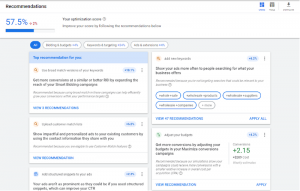July 16, 2015

The Brief
This is the first in a series of articles to help you build relationship capital in the conference room.
If it’s true that closing a deal is actually “the process of opening a relationship,” then how does a team of salespeople start building connections—and laying the groundwork for future return and referral business—during prospective client meetings?The mainstream popularity of behavioral science has given birth to a bevy of strategies for gaining trust and increasing likeability in and out of the conference room, and there’s plenty to that (see below). But there are other elements to building relationships which, when combined with the latest in behavioral research, can help you gain your client’s trust and leave that sales meeting with not only a deal, but a solid relationship that will pay further dividends down the road. Here are three of those strategies:
1. Do your due diligence
Before you step foot into your client meeting, you should already know your audience, inside and out. Entrepreneur and HigherVisibility co-founder Adam Heitzman points out in a recent column for Inc.com that “no matter what industry you are in, knowing the decision maker is crucial to a quick close.”Business priorities, however, are just part of the picture. In order to lay the groundwork for both the close and the connection, you’ll need a warm introduction. That means finding common ground between you and your prospective client. Before you meet, do your homework—find the friends, organizations or colleagues you may have in common, and don’t be afraid to lead with that. A firm handshake is good, but a school motto makes for a much warmer introduction.
2. Amp up the charisma
Okay, easier said than done for some of us. But scientists are getting closer to determining what it is about the vocal stylings of major world leaders that inspire others to follow them. For men at least, lowering the pitch of one’s voice may help convey authority, especially when speaking to peers, regardless of what’s actually said.Regardless of your vocal pitch, you can gain the trust of your prospect by simply expressing your feelings. No, really. There’s no need for melodrama, but by naturally conveying your emotions, you can actually affect your client’s mood, causing them to sync up with you. It’s a phenomenon rather menacingly referred to as “emotional contagion.”
Speaking of mimicking, in between speeches—in other words, when you’re attentively listening to your client—reinforce trust bymirroring your client’s body language—sit when he sits, face in the same direction, etc. It’s another way to indicate that your intentions line up with his.
3. Start with questions.
One of the best ways to show a client that you have his best interests at heart is to start your pitch with questions. Before you show him what you have to offer, ask him about his needs, concerns and priorities—then explain exactly where your product fits in. Even if you’ve done your research (which, of course, you have), this gesture will demonstrate to your prospective buyer that his needs come first, establishing a mutually beneficial relationship that will last.Always remember, the most important part of your sales meeting is not the deal you close in that moment, but the opportunities you create for the future. And it all starts with relationships.
A version of this article was previously posted on the RelSci blog. It has been published here with permission.
(182)






